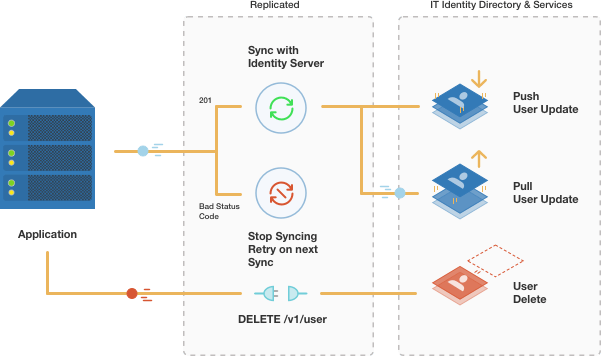You can now offer your Replicated deployed enterprise customers user management through LDAP & Active Directory by integrating with Replicated’s Directory Service module.
The first version of this feature supports LDAP 389 DS, Free IPA, Open LDAP, and Microsoft Active Directory 2008 & 2012.
We’ve done our best to simplify the integration pain points from these legacy legendary technologies. Instead of writing C connectors, your team can keep building features that truly differentiate your application.
So, how does it work? There are 2 parts to this… the first piece will do the authentication & should only take about 3-5 lines of new code. The second piece is optional, takes a bit more effort but will provide you with full LDAP/AD Sync to your user table (so you can do things like show a list of users etc). This is the ‘producty’ description… developer docs are available).
Part 1: Auth

If you have any type of federated login, then you likely have an if block that determines which method of authentication is being used. For Replicated DS Auth, you’ll want to check an envar to determine if DS auth is enabled. If it is, you’ll simply collect the username & password from the user as normal:

You then post that data to the replicated integration API login endpoint (which we register with every container as an environment variable running in a Replicated install).
And we’ll provide you with a success or failure response (200 OK or 401 Unauthorized)
If the response is successful, you’ll also get a response body with the username, DN, and an array of attributes. The attributes array is very powerful as you could instruct your enterprise customers to include custom attributes in their DS that you can use in your app. (Quick note: unless you require that your customers include a specific field in the attributes section, you should not expect it. Every IT runs these systems a bit differently, so if you need something to be there, require it for your integration.) Full auth API specs.
Part 2: Sync

If you manage a user table in your SaaS product you might want to consider going beyond simple DS auth and use the Replicated DS Sync functionality (see sync developer docs). This will allow you to access your user table for product features like user profiles, sharing, attribution, etc. Sync is designed to work in conjunction with auth, so make sure you enable Part 1 before moving on to Part 2.
To do this you’ll need to create a REST provisioning service with specific endpoints. When you invoke the Replicated Sync we’ll use this endpoint to create, delete & manage users in your user table, in sync with your customer’s activities in AD or LDAP.
We suggest deploying this as an additional microservice that is only available in your Replicated installed version when a customer enables DS Sync. You can do this by identifying this service as an optional container in your Replicated YAML.

